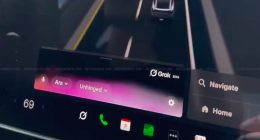Technology is continuously advancing and being innovated. Since it’s used in almost every aspect of the current society, certain technological advancements are also present in the finance and banking industry. Aside from having online financial lenders like Payday Depot for ease of access, QR code payment is also now a thing.
This article will briefly describe what QR codes are and how they make payments more convenient.
Brief Overview: QR Codes
Originally invented by Masahiro Hara, QR codes were initially developed to track vehicles during manufacturing in 1994. Until 2014, their employment remained the same. Now, they’re used for specific payment methods.
QR or Quick Response codes are 2D codes composed of patterns of black squares and bars. They are scanned to decode the information behind the pattern that’s used for making payments. QR payment codes are now a trend and are used to make financial transactions.
How QR Code Payments Work
The popularity of using QR codes for making payments is rising. Generally, the payment process using QR codes goes like this:
- Merchants or buyers create their own QR codes.
- The buyer or merchants scans the code.
- A transaction request will appear.
- Transaction results are shown both to the buyer and the merchant.
Types of QR Codes and Payment Modes
There are two main types of QR codes you may encounter:
- Dynamic codes – QR codes are editable and automatically show payment information once scanned.
- Static codes – QR codes are uneditable and require manual analysis and calculation of payments once scanned.
Additionally, there are two primary ways or modes you can make a QR code payment:
- Merchant-presented – In this method, the merchant will show their QR code for the customers to scan when making a payment.
- Customer-presented – The exact opposite of the first. Here, customers display their QR codes, and merchants scan them for making transactions.
Benefits of QR Code Payments
Using a touch-free QR code payment method has its numerous benefits, including:
- It costs less to set up. It’s cheaper to use QR code payments in a business than buying and using manually managed point of sale equipment.
- It’s fast. Payments are processed quickly compared to traditional methods, like using cash registers, etc.
- It’s convenient. Users, especially merchants, can easily set up their code, and buyers can pay and scan their code anywhere and anytime.
- It’s safe and secure. Unlike other payment methods, QR codes pose fewer risks of getting personal information and transactions leaked or stolen. It’s completely digital.
Implications of Key QR Code Trends
Since it’s more popular now, you can observe some trends and their impacts in QR code payments, such as:
- There’s a continuous need for Internet connectivity for it to function.
- Smartphones are required to make QR code payments.
- It’s gaining more interest and interventions, especially from the government.
Conclusion
Most consumers and merchants now prefer QR code payments. It’s convenient, easy, and safe to use. It’s best to know and look out for the main trends of QR code payments and their implications so you can have regular updates on their popularity. Overall, the QR code payments trend is one of the main implications of the financial and banking industry going modern and technological.



